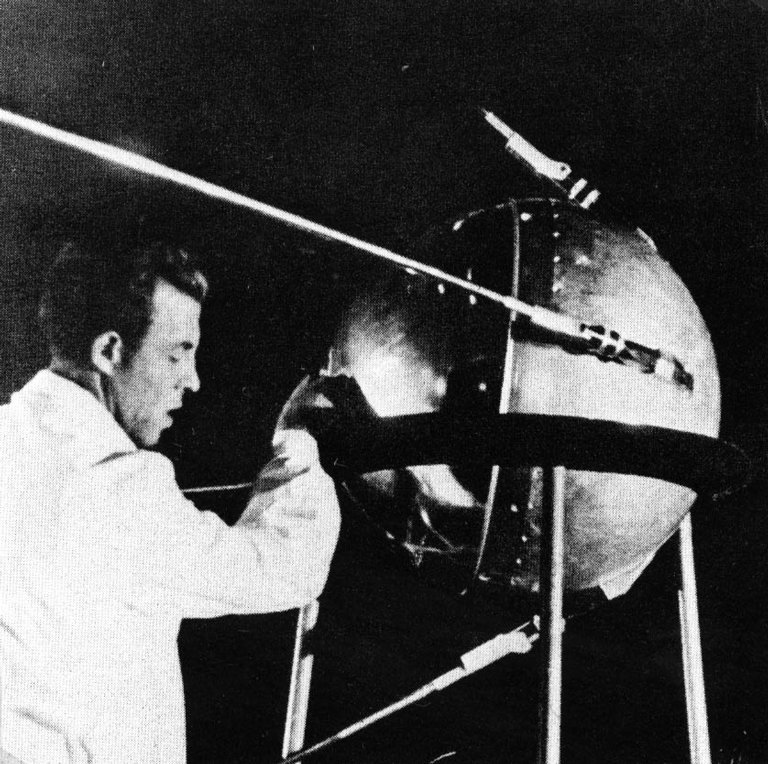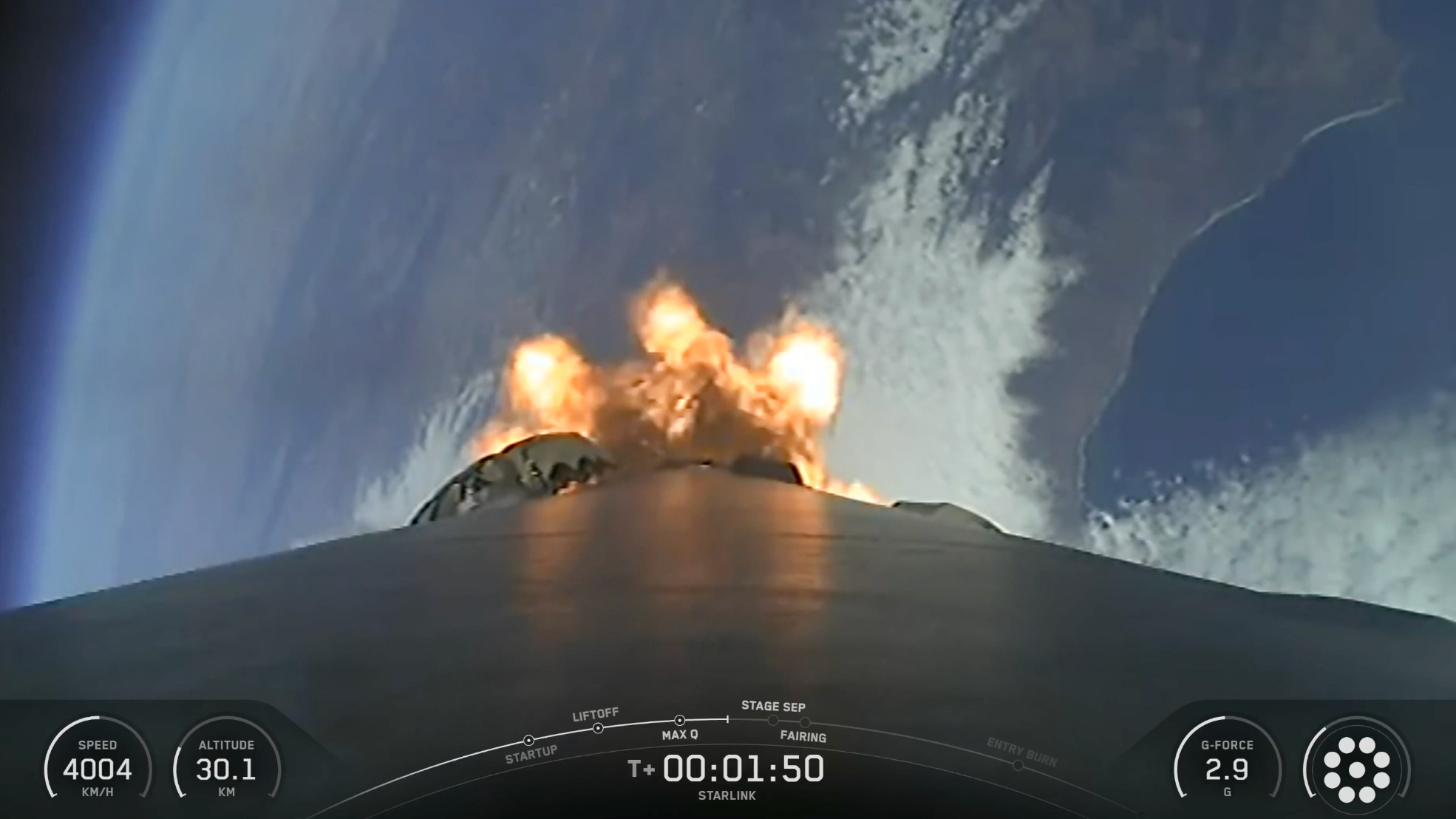Telstar: Satellites Beamed 1st TV Signals Across the Sea
Telstar was the name of a pair of communications satellites NASA launched in the 1960s. The twin prototype satellites, Telstar 1and 2, were the first satellites able to send a television signal between North America and Europe.

Before the Telstar satellites achieved orbit, live television broadcasts from across the world were not possible. Live events, such as Queen Elizabeth's coronation in 1953 or the first manned launch in the United States in 1961, could not be shown across the ocean. Instead, networks relied on tapes shipped by airplane.
Although the Telstar satellites could only show events for 18 minutes at a time as they whipped around their orbits, they served as important precursors for round-the-clock cable television coverage.
Satellites to supplement cable
Telstar was by no means the first communications satellite — that distinction went to the United States' Project SCORE in 1958. A series of other communications concepts followed, including an inflatable satellite (Echo 1) that broadcast an address from President Dwight D. Eisenhower.
Echo 1, however, was a passive communications satellite — it simply received and reflected the signal to its destination. AT&T wanted to go a step further and have an active communications satellite that could receive and amplify signals, then transmit them again.
According to a NASA publication, "Beyond the Ionosphere," AT&T was prepared to part with an estimated $500 million to eventually put 55 satellites in orbit, providing global coverage. The company believed satellites would be a more cost-effective way of transmitting information. At the time, the company (like others of the era) relied on cable transmissions to spread its programming.
Breaking space news, the latest updates on rocket launches, skywatching events and more!
Bell Telephone Laboratories (which was a part of AT&T) constructed six Telstar satellites out of the entity's own money, but only two of those were launched: Telstar 1 and Telstar 2. The company also paid NASA $6 million in 1960s dollars (nearly $50 million today) to launch the satellites.
"NASA was able to negotiate such an excellent deal with AT&T, even though Telstar was not really a NASA project, because NASA held the monopoly for launch services," pointed out NASA in the publication. "Moreover, NASA claimed Telstar as a NASA-supported project."

Lucky first try
Fortunately, unlike other satellites of the time, Telstar 1 launched on the first try. It soared into space on July 10, 1962, from its launch pad at Cape Canaveral in Florida.
The 34-inch (87 cm) spherical satellite, which weighed 171 pounds (77 kilograms), was inserted into an orbit of about 3,505 miles (5,640 kilometers) at its highest, and 903 miles (1,453 kilometers) at its lowest. This is quite different from the major communications satellites of today, which "hover" at one point above the surface in geosynchronous orbit, but bear in mind that this was a test.
Telstar's first live television pictures in France — relayed only a few hours after launch, according to NASA — showed a U.S. flag outside of a receiving station in Maine. The satellite was also equipped to handle telephone calls and even picture faxes, and had an experiment that could examine the radiation in the Van Allen belts above Earth.
"Telstar was a tremendous technical success, and the international reaction was spectacular," NASA later wrote in "Beyond the Ionosphere."
"A U.S. Information Agency (USIA) poll showed that Telstar was better known in Great Britain than Sputnik had been in 1957. Rather than launching a useless bauble, the Americans had put into orbit a satellite that promised to tie together the ears and eyes of the world."
The satellite, in fact, was immortalized in a song in 1962. A British band called The Tornados created the song "Telstar," which hit No. 1 on the U.S. Billboard 100 at the height of its popularity. Many years later, Susanna Hoff, lead singer of the Bangles, wrote a 1991 song that mentioned the satellite; it was called "Wishing on Telstar."
Monopoly concerns
Telstar 1 started to have transmission difficulties in November 1962, and eventually saw its transmitter fail in February 1963. Telstar 2 launched on May 7, 1963. It was practically a twin of Telstar 1, but in this case, the satellite lasted until it was turned off in 1965 — longer than its predecessor.
AT&T had clearly demonstrated acumen in how to build and use a satellite. They already had a monopoly in the telephone business, and according to NASA, there were those that feared that the monopoly could extend into space as well.
"AT&T's preeminent position as the largest U.S. common carrier and sole international telephone carrier, together with its willingness and ability to commit large sums of money to the development of communications satellites, convincingly suggested that commercial satellite utilization would very likely become AT&T utilization," NASA wrote.
In August 1962, President John F. Kennedy approved the Communications Satellite Act. This act had been in the works for several years. The act placed U.S. satellite communications under a federally supervised company (with joint participation from several U.S. firms) called the Communications Satellite Corporation, or Comsat. While AT&T was a participant in Comsat, this ensured that the company could not have a space-faring monopoly.
Comsat was later a founder of an entity called Intelsat that focused on international satellite coverage. In 1970, the Federal Communications Commission — under the Open Skies Policy — opened up domestic satellite communications launches to all firms that were capable of doing it. Comsat and Intelsat still exist today, but under very different structures.
Telstar's legacy
All in all, Telstar showed that the communications business was an area of great flux in the 1960s and 1970s. The Telstar satellites ushered in an era where satellites turned from experimental machines to sophisticated systems with great value to the companies producing them.
A new wave of advanced geosynchronous spacecraft shares the Telstar name, but these commercial satellites are far more advanced than their predecessors. Telstar 301 launched in 1983, followed by Telstar 302 in 1984. Telstar 302, renamed Telstar 3C, was put into orbit by a Space shuttle Discovery crew. A dozen more satellites bearing the Telstar name have since been launched.
Telstar 1 is still in orbit, as of February 2013, but it is no longer functional.
— Elizabeth Howell, SPACE.com Contributor
Join our Space Forums to keep talking space on the latest missions, night sky and more! And if you have a news tip, correction or comment, let us know at: community@space.com.

Elizabeth Howell (she/her), Ph.D., was a staff writer in the spaceflight channel between 2022 and 2024 specializing in Canadian space news. She was contributing writer for Space.com for 10 years from 2012 to 2024. Elizabeth's reporting includes multiple exclusives with the White House, leading world coverage about a lost-and-found space tomato on the International Space Station, witnessing five human spaceflight launches on two continents, flying parabolic, working inside a spacesuit, and participating in a simulated Mars mission. Her latest book, "Why Am I Taller?" (ECW Press, 2022) is co-written with astronaut Dave Williams.
